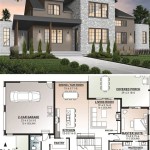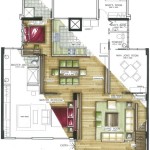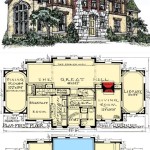Essential Aspects of Color House Plans
In the realm of home design, color plays a pivotal role in shaping the ambiance, aesthetic appeal, and overall perception of a space. Color House Plans are comprehensive blueprints that incorporate thoughtful color schemes into architectural designs, ensuring a harmonious and visually stunning living environment.
When creating Color House Plans, several essential aspects come into play:
Color Theory and Harmony
Color theory provides a framework for understanding how colors interact and influence each other. Color schemes can be categorized into various types, such as monochromatic (shades of the same color), analogous (similar colors adjacent on the color wheel), and complementary (opposing colors on the color wheel). Color harmony ensures that the colors used in a design complement each other, creating a cohesive and visually pleasing outcome.
Exterior Color Selection
The exterior color of a house significantly impacts its curb appeal and overall character. Factors to consider include the architectural style, surrounding landscape, and climate. Light colors reflect more sunlight, reducing heat absorption, while dark colors absorb more sunlight, making them more suitable for colder climates. Earth tones and neutral colors often blend well with natural surroundings, while bolder colors can create a statement or reflect a specific design style.
Interior Color Schemes
Interior Color Schemes play a crucial role in creating the desired ambiance of each room. Warm colors, such as reds, oranges, and yellows, evoke a cozy and inviting atmosphere, while cool colors, such as blues, greens, and purples, convey a sense of tranquility and serenity. Neutral colors, such as whites, grays, and blacks, provide a versatile backdrop that can be accented with bolder hues. The size and shape of the space, as well as the amount of natural light, should also be taken into account when selecting interior color schemes.
Accents and Details
Accents and Details can add visual interest and depth to a Color House Plan. Bold colors can be used to highlight architectural features, such as moldings, trims, or fireplaces. Decorative elements, such as curtains, pillows, and artwork, can also introduce pops of color and complement the overall color scheme.
Lighting and Color
Lighting plays a critical role in how colors appear in a space. Natural light can alter the perception of colors, making them appear warmer or cooler depending on the time of day. Artificial lighting, such as incandescent bulbs, fluorescent lights, and LED fixtures, can also affect the way colors are perceived.
Professional Considerations
Creating Color House Plans requires a skilled eye and an understanding of design principles. Architects and interior designers are trained professionals who can provide valuable insights, help clients visualize the final outcome, and ensure the color scheme complements the architectural features of the home.
Conclusion
Color House Plans are an essential aspect of home design, transforming blueprints into vibrant and aesthetically pleasing living spaces. By understanding the principles of color theory, considering exterior and interior factors, incorporating accents and details, and paying attention to lighting, homeowners can create harmonious and visually stunning homes that reflect their personal style and enhance their daily lives.

Bluestream Design Studio Florida Color Floor Plans Cad Plan Port Orange Daytona Palm Coast New Smyrna Flagler Volusia County

Color 2d Graphics Floor Plans

Color 2d Graphics Floor Plans

Another Color Floorplan Sample Floor Plans Custom Master Bath

Floor Plan 2d Send Me Your Drawings And Coloring I Plans Apartment How To

Color Floor Plan Residential Plans 2d Renderings

Color Floor Plan Of A Single Family House Plans Design 3d

Color 2d Graphics Floor Plans

Architectural Technical Color Floor Plan Colorful Of A House Three Bedrooms Apartment Cad Drawing Vector Ilration Stock Adobe

Make Your Presentation Stand Out With Color 3d Floor Plans








